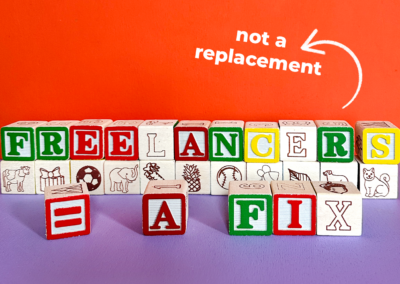Over the past 25 years, I’ve watched technology grow from a place of being lucky to have one computer in a home to the internet powering everything (or at least feels like it) and computing power at your beck and call. It then follows, these advances in technology have spilled over into what is considered a traditional working environment.
Where you once had to be physically present on-site for almost every line of work, data suggests more than one-third of the jobs in the market today can be completed outside of a traditional office environment. Historically, managers have struggled with remote working. But the onset of the pandemic has caused many companies to revisit their work-from-home policies, with many companies allowing their employees the option of working from home remotely on a permanent basis.
So where do companies go from here? What would the future of work look like to best benefit the available talent in our country? Three words: flexible working arrangements.
In 2020, 21 percent of employers stated they had lost employees due to the pandemic and statistics have shown this impacted mothers more than any other demographic. Even in pre-pandemic times, more women quit due to the demands of juggling a rigid work schedule with caring for children or family members. Studies have shown that 43 percent of women quit their jobs when they have children, yet only 40 percent of them return to full-time work. Furthermore, an astonishing 65 percent of stay-at-home moms want and need to work but struggle to find full-time work that will allow them to continue caring for a child or other family members.
Have you ever priced out childcare?
Let me tell you, it’s expensive. With a traditional schedule, workers are tasked with paying a premium for someone to watch their young child, or tacking on after-school care programs so they can finish out the workday that’s been predetermined for them. But it doesn’t have to be that way.
What if companies allowed their employees to choose the hours they worked? Employees having the option to choose their work hours would free up time for mothers and fathers to pick up their kids from school, attend soccer practice, or cheer for their children at the spelling bee. It even allows adult children more time to care for an aging parent. Family dynamics are varied, they require different levels of support depending on the structure. A more flexible work schedule allows a person the opportunity to provide more than just financial support.
If you’re thinking it would descend into chaos and pandemonium, just hear me out. Up until the pandemic forced many office jobs into remote status, remote work was battling against a false notion that remote workers weren’t as productive. So, why couldn’t flexible work be the same? A few years ago, a study reported four-fifths of respondents would choose a job with a flexible schedule over one that was not; and just shy of one-third would rather have control over their hours instead of a big promotion or shiny office Another study reported 90% of respondents said a flexible working arrangement would help boost morale.
If it’s what the workforce wants, maybe it’s time for companies to give it to them and see how productivity increases. If you have employees asking for more flexibility, ask them what type of flexible arrangement they need.
Are they looking to job-share?
Reducing hours and splitting duties with another part-time employee can decrease the stress from their day and allow them to better focus on the work while at work and on their other priorities at home.
Do they need to set sporadic hours during the day?
A lot of parents juggling childcare and working remotely will find more uninterrupted (read: productive) time during the school day or younger kids’ nap times, or before or after their families’ days start. Weekends even provide more opportunities to finish projects for the office if they have additional support to help manage childcare.
Does your team collaborate, have regular meetings, or need to be available or client calls occasionally?
Consider having a few set hours a day or week where your flexible employees are required to be online while allowing them to flex the rest of their working hours. Set the standards of how much time you expect them to work each week in that position and let them fly from there.
Taking the leap into flexible working arrangements will allow organizations to both retain current employees struggling with work/life balance burnout and open up their talent pool to qualified individuals who may be struggling to find work while being the primary caregiver to their families. It may even give them the edge up over other job offers when they can’t outbid on salary and financial benefits alone.
Sara’s Socials: LinkedIn, Instagram
Editor’s Socials – Asha Atkins: LinkedIn, Twitter, Instagram



